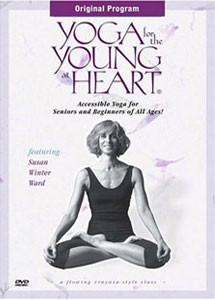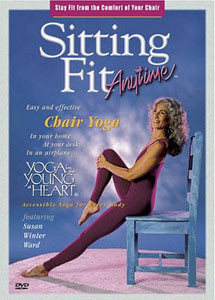Yoga: What is it all about?
For 5,000 years, yoga has been a path to good health and conscious living. Would you like to increase your physical vitality, mental clarity, and heighten your spiritual awareness? Regardless of your age or physical condition, yoga can bring you these benefits.
Yoga is training in listening to our bodies. By tuning in through awareness of our breath, through conscious movement in the poses and in the transitions between the poses, we can receive an amazing amount of information from our bodies.
The stuck places, the places in our bodies where energy is blocked, cause us discomfort in order to get our attention. What is that “stuck place” in your body trying to tell you? You can mentally go inside that place, breathe into the area, expand it with your breath, then relax, open your mind and ask your body what the stuck area is trying to tell you. Be open to the message and you may find the discomfort beginning to melt away.
What are the benefits of yoga?
Yoga has been clinically shown to lower blood pressure, increase circulation, build muscle tissues, increase flexibility, relieve stress and stress-related symptoms, and strengthen the respiratory system. Other benefits can include relief from symptoms of menopause, counteracting osteoporosis, cleansing the internal organs, energizing the nervous system, balancing out the digestive system and obtaining relief from headaches and lower back pain. For caregivers and others with a hectic, stress-filled life, yoga is Yoga is a way to decrease your stress level and increase your stamina and flexibility. Although you may enjoy taking a yoga class, unlike swimming, tennis and many other activities, yoga can be done in your own living room, at any hour of the day or night, without the purchase of any special equipment.
Do I have to stand on my head?
There are as many different styles of yoga as there are yoga teachers. Yoga classes range from very gentle meditative yoga, to very intense and challenging ‘power yoga.” It’s important to find a style or a class that is right for your level of ability and for your body. Whatever style of yoga you choose, tune in to your body and do only what feels supportive and beneficial to you.
Although headstands, and shoulder stand, can be an excellent way to improve circulation and concentration, they are not for everyone. In particular, if you have suffered any damage to your neck or back, headstands may not be good for you.
But there’s a yoga style that’s right for everyone. Yoga is now widely taught in yoga centers, YMCAs, on TV, and is available on video, audiotapes and in many of books. Whatever method you choose, be sure to choose a class and teaching style that inspires and is appropriate for you. There as many different yoga styles as there are yoga teachers, so shop around.
Just give it a try. If you’re breathing, you can do yoga. One of the simplest of yoga poses is called “Savasana,” the corpse pose is the pose of deep relaxation. The idea is to consciously bring your attention to each part of your body and relax it completely, as free from tension as if you were a corpse.
Lie comfortably on your back with a pillow under your knees to support your lower back. Throughout this relaxation exercise, you can first tense the muscles to bring your awareness to them and then completely relax the areas.
Begin with your feet. Consciously tense, then relax, all the muscles in your feet and ankles, then tense and relax the muscles in your calves and knees, then in your thighs, hips, buttocks and lower back.
Relax your groin and abdomen, your ribs, and collarbones, and your upper back. We often carry tension in muscles without knowing it.
After you have relaxed the muscles in your chest, in your arms, shoulders and your neck, you can move on to relax your head and face. Try clenching your jaw and then releasing it; scowling, then releasing your forehead, even tensing the muscles around your ears!
After you have tensed and relaxed every muscle in your body, lie quietly for at least 10 minutes and rest. You will be grateful for the deep relaxation you’ll experience.
A roaring exercise
Another way to relax the muscles in your face is to practice roaring like a lion! Sit comfortably, then open your mouth and eyes very wide, and raise your hands near the sides of your face with the palms out and fingers stretched and breath outwards loudly as if you were roaring. This can be great fun (even if it does look a little silly). It can help expand your lungs and help your face muscles relax.
© 2015 Susan Winter Ward. All rights reserved.
Permission for commercial use must be obtained in writing from the author.




Hi, Your new website is fantastic! Thanks for making your videos downloadable. I’ve ordered several!!
Thank you!